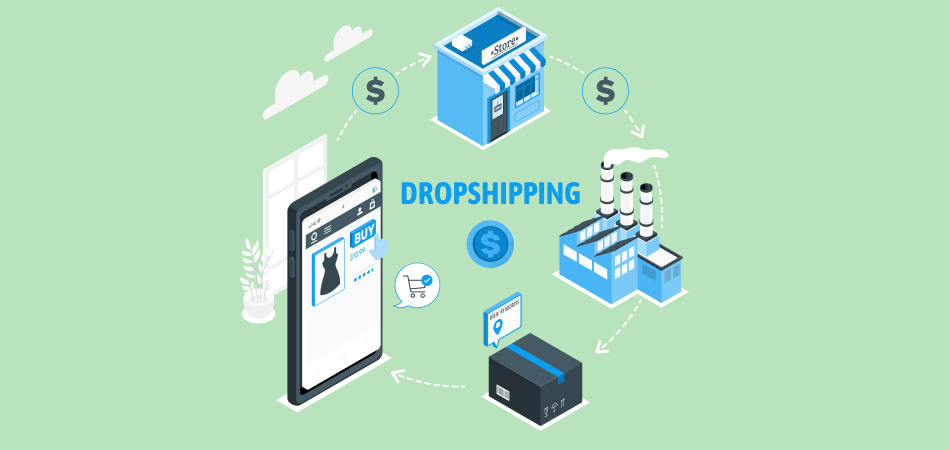An Ultimate Guide to Set Up a Successful Shopify Store to Increase Sales in 2022

How could an efficient Shopify store influence your profits? A well-customized store helps you attract attention, decrease cart abandonment, and increase sales conversion. Thus, how could you set up such a Shopify store? Let’s see:
In the post, I compiled 6 key settings that can make your store more professional. I also answered some FAQs about the Shopify store setting. Read the post carefully and you will know how to boost your sales by creating an appealing store.
Set Up Your Shopify Store: Preparations
Setting up a Shopify store will take you a lot of time if you don’t know what to prepare before starting. Thus, to make the whole process easier, let’s check the things you need to plan:
1. Make a Business Plan
The business plan asks you to learn about the product you’re going to sell and how you’re going to sell it. When doing dropshipping, product sourcing is crucial since the competition is intense. A good business plan contributes to the first part of your business’s success.

Apart from selecting the main product for your Shopify store, it’s also necessary to tell your audience and customers what you are thinking about and decide on the marketing channels you will use to market your business. There is one more thing you need to consider: workflows. It means how you will handle the orders from your customers and how you will ship them.
2. Try to Set Up a Shopify Store Legally
After knowing how your business is going to work, you need to tackle the legal structure. When running a Shopify store, you can register an LLC or a corporation, but it’s also possible for you to do it as a sole proprietor.
Generally, to set up all the legal details of a Shopify store, you only need an SSN or SIN. Here are two ways for you to learn the details:
- Read IRS guidance of self-employed individuals.
- Get in touch with your local authorities to get more information.
3. Acquire a License
If your state requires a license in your line of work, you have to acquire one before you start selling your products or services. It’s vital since if you don’t have one in advance, you may face heavy fines when your business gets started.
In some states, you may need additional paperwork and filings to make it legal to sell some types of products. For example, when your state asks for sales tax on the type of product you are selling, you have to prepare the file for a tax ID. Otherwise, you will not be able to sell goods and accept payments.
Read to learn how to acquire a business license for your online business.
How to Set Up Your Shopify Store: Crucial Settings
Here are some critical settings for a successful Shopify store. Read carefully and customize your store for your business in 2022.
1. Set Up Payments
Payment setting is important. The right payment method helps you gain more customers and convert more sales. Since you are selling on Shopify, Shopify Payments is a good option. It enables you to accept various forms of payment, including Shopify Pay, Google Pay, credit cards, and more. You just need to provide Shopify with your business information, product information, personal details, and bank account number to sign up for Shopify Payments.
PayPal is another choice for you. You can access Shopify Settings > Payments Section to add your PayPal email address. Then, in the future, it allows you to change, remove, or add additional payment options.
2. Set Up Checkout
Checkout flow is also vital for you to gain more sales. Providing a faster checkout speed makes you stand out from your competitors. Here, I have to say, you can try out one-page checkout. By putting shopping and payment on one page, your customers can save a lot of time and get a better shopping experience.
There are also some alternatives for you:
- Abandoned checkouts: You can set up automatic reminder emails for those who reach your checkout but do not finish their purchase for any reason. Your customer will receive an email 10 hours after someone abandons your checkout when your site is still fresh in their minds as long as you set it up.
- Customer contact: Shopify allows customers to decide how they want to be reached after placing an order, such as messages or email.
- Email marketing: With this setting, you can provide this option to subscribe during the checkout process. When you have newly launched products or discount deals, you can reach out to them to drive more sales.
3. Generate Required Policies
With Shopify, you can get handy tools for generating terms and conditions, standard privacy policies, and return and refund policies. These tools are available under Shopify Settings > Legal > scroll down to Refund > Privacy > Terms of Service > Shipping statements section. You can go there to generate each policy sample.
4. Add Free Shipping Rate
Free shipping for your products is also significant. Under your Shopify account settings, you can make free shipping a default option. When pricing your products, no matter which pricing strategies you would like to apply, you need to take this factor into account if you want to earn a profit after absorbing the shipping costs.
Here are the whole steps to set it: You can go to Shopify Settings > Shipping and delete all shipping zones “Domestic” first. Then you click “Add shipping zone.” You can type “free shipping” in if you’re offering free shipping. Then, if you’re ok with shipping to other countries, you can choose “Rest of world”. Lastly, you can go to the “Price based rates” section to reach “Add rate” and select the “Free shipping rate.”
| Get Started Now to Grow Your Online Business with the Best AliExpress Dropshipping Tool - DSers! |
You’d better tell your customer how much shipping will cost if you’re not planning to offer free shipping. By integrating Shopify with Canada Post, USPS, and other carriers, you can generate reasonable pricing. If you’re going to ship orders from Canada, Australia, or the US, you can also use Shopify Shipping.
5. Set up Taxes
Shopify stores can auto-calculate taxes based on the ongoing sales tax rates around the globe when you’re required to collect a sales tax from your customers. Apart from that, when you want to know whether you’re charging the right amount of tax, you can consult with a tax professional. You can override the default tax settings in your region if there are specific tax requirements for certain products.
You can set up your region in Shopify Settings > Taxes. You can apply the default settings if specific conditions apply to your products, or edit the default rates if you desire. Shopify doesn’t remit or file your sales taxes for you; you need to enter your tax number yourself.
Read to learn more about the dropshipping taxes.
FAQs about How to Set Up Your Shopify Store
Now you have learned some key settings for your Shopify store, but you are still confused about some points. The following frequently asked questions can help resolve your confusion.
1. Is setting up a Shopify store free?
You don’t need to pay something to customize the look of your Shopify store. However, if you want to make the store public and start selling, you will need to purchase a subscription plan. The price ranges from $29 to $299/month. You also need to spend an average of $14 per year to purchase a domain.
2. How to start a successful Shopify store?
The question is difficult to answer. What you should remember is to choose the right product to sell, set your stores well, have a great marketing plan, and make sure your store looks professional.
3. Is working with Shopify profitable?
Although you need to pay transaction fees when working with Shopify, you can benefit in the end since setting up a store on Shopify is way cheaper than developing an e-commerce store from scratch.
4. What Shopify apps do I need?
Starting selling will not require you to use any apps. However, with them, your store could be better, especially for dropshipping. With dropshipping tools like DSers, you can operate an automated dropshipping business easily.
Also, with MailChimp, you can apply email marketing to increase sales. For more, you can read our Shopify plugins article to learn how they benefit you.
Bottom Line
Setting up an efficient Shopify store can bring more sales opportunities to you. After learning how to set up a successful Shopify store and answering some FAQs about setting up a Shopify store, it’s time to start your own business in 2022.
Before jumping into the market, you can search for online business opportunities. With these brilliant business ideas, you can start easily and earn more profits. Hope you are selling well.













 Company
Company
 Why Choose DSers
Why Choose DSers
 Blog
Blog
 Help Center
Help Center



